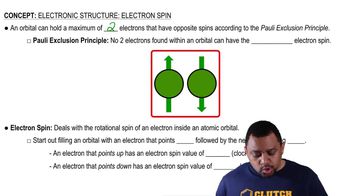Match the subatomic particles (1 to 3) to each of the descriptions below:
1. protons
2. neutrons
3. electrons
b. surround the nucleus
 Verified step by step guidance
Verified step by step guidance Verified video answer for a similar problem:
Verified video answer for a similar problem:



 1:25m
1:25mMaster Subatomic Particles (Simplified) Concept 1 with a bite sized video explanation from Jules
Start learning